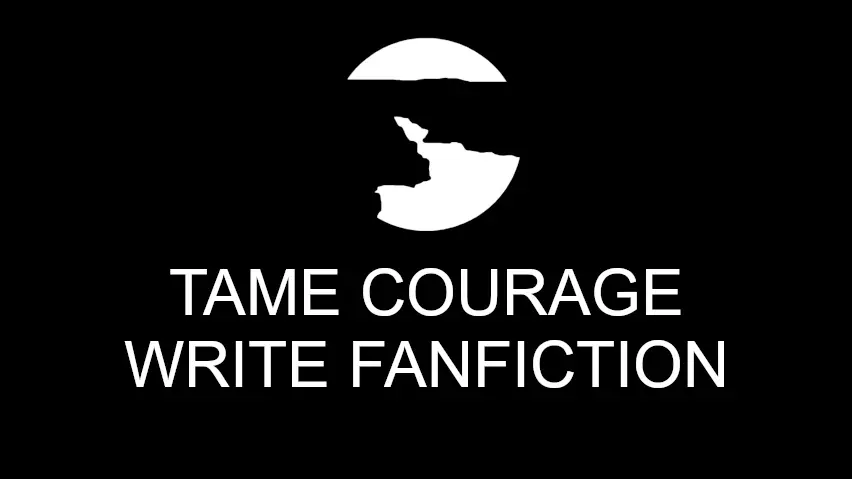What it is
In the field of writing, in almost every story, there is a character through whose eyes the events of the story are playing out. This tends to be the protagonist, the main character, or a random fox stalking hobbits. In the Harry Potter books it was Harry Potter, in Coraline it was Coraline, in Robinson Crusoe, it… was…
Hmm.
Usually a story stays inside the mind of one person. Head hopping is when this isn’t the case. Between chapters, it’s not always so terrible, but when it’s between paragraphs, even some sentences, framed inside the mind of another character, it really causes issues. Imagine in Harry Potter, if it had a paragraph in Ron’s mind, a line in Hermione’s, a sentence in the mind of that millionaire guy…
Its uses
It comes under a story’s point of view, though it’s usually in third person when this issue mostly occurs, and I will phrase it as an ‘issue’.
This can work, in a way, as it can help move a plot along if there’s multiple developments going on at once – like in movies, cutting scene to scene. It can give you the thoughts of another character – maybe they’re hiding info, maybe it looks like they’re doing something for their own self-interest and you want to show how it’s actually to help the protagonist in the long run.
It can be an interesting look into the minds of other characters, how they feel, how they think, but… isn’t that defeating the point of mystery?
Its flaws
The main flaw in this is that we can’t truly connect to the protagonist! If the idea of a story is to bring in the emotions of the reader, then surely the best way is to connect the reader to the main character, as it’s through their eyes all is seen.
It can make things complicated to the point of distraction if it’s not handled properly, never knowing if it’s Bill or Bob or Billo who’s thinking these thoughts. You as the writer are also going to lose track, treating your characters like mind-readers, thinking they know how the other’s feeling without giving a physical marker in the body language or without them suggesting such in their speech. It also destroys a key element in an entertaining story – letting your reader figure things out for themselves.
The other characters should all be a mystery to some extent. When you talk with someone, you don’t know everything about them. You make assumptions and fill-in what you expect based on your experience. You don’t need to show their thoughts. It’s limiting to stay just in one head, and it’s that limitation which makes the story interesting. Not knowing the thoughts and feelings of the other characters enhances the effect, even if they’re the main character’s lover; it doesn’t detract.
Alternatives
The solution, and usually the better way to go about this, is to ground yourself and your story firmly in the head of the one person (or monster). Even stories in third person which go ‘he did this’, ‘he did that’, usually show only the thoughts of that person and the observations that person makes.
And rather than having a plot which jumps, ‘I’m over here’, ‘I’m over there’, it stays constant and coherent. The tension is never broken. In films it’s perfectly normal to jump around from the big Police Chief with his stacks of paperwork and the broken marriage, to the Junior Detective with the donuts and the PTSD, and to the Lieutenant with the ulterior motive, because, in film, we can’t get the golden insight into the world – we can only watch, we can’t ‘feel’.
Sure, you can still jump from one character to another if you’re careful, swapping between chapters, and successful books have done this for various reasons, but if you don’t specially need it for the plot and you can’t work around it, just avoid it! And certainty, don’t start hopping heads between paragraphs or I’ll snap your fingers like a snickers bar! Crack, your fingers, crack!
Uses of the Alternative
We can form an attachment to the main character in a way far deeper than in movies. We don’t just see them, we don’t just hear them, we exist within their mind, witnessing the story through them.
And my advice to you is to capitalize on this as much as you can! Sure the work-arounds can be tricky, but if you plan with this in mind… the reader’s attachment to your character is going to be slick as hot butter.
This also encourages descriptive writing, rather than just description. If your story is through the eyes of Tom, and Bob is hiding something, Tom isn’t going to know ‘Bob was hiding something’, and you can’t slack by just telling us he’s hiding something. You have to work the suggestion into his dialogue and into his behavior. You’re required to put inconsistencies in his actions, flaws in his motivations.
The readers would be able to pick up on this, will have to be alert and engaged emotionally and rationally, rather than just be told how to think, told how to interpret your story.
We show the reader what the main character can see, and let the reader come to terms with their own observations, just as the character does.
It also makes them feel smarter, doesn’t talk down to them. If Tom can tell Bob’s being deceitful, no need to tell us, just show us what Tom notices and let us figure it out from there, a reward for active thinking, for active investment in the story. If we just tell – whether Tom knows it or not – Bob was hiding something…
Example
Mary walked down the path [Mary’s perspective] across the cracked pavement, the sun hot on her back. She went past Patricia, who stood in the shade of a dark alley. Patricia chuckled to herself [Pat’s perspective] in mocking of Mary’s appearance as she walked by. Down the end of the street, James walked from around the corner. He stopped when he saw Mary. He didn’t want [James’ perspective] to talk to her, but knew he had to be polite and smiled anyway.
Get that? It sounds like a step-by-step how-to guide in a cooking book! Now add flour, mix vodka, then Bob thought this, Billy felt that. It jumps around between the characters, never settling, never allowing the reader to make their own interpretations. Now… we’ll try it again!
Mary walked down the path across the cracked pavement, the sun hot on her back. She went past Patricia, who stood in the shade of a dark alley. Mary heard Patricia’s mocking chuckle as she walked past. Then she saw James, who came walking from around the corner, stopping the moment he saw her. He smiled at her, though she could see the insincerity in his expression, his lips pulling back like rubber from his teeth.
It isn’t perfect writing, but you get the idea. See how much more fluid it is? See how much less confusion there is, how much more you connect with Mary and understand it’s her who’s the main character in this? You are left with a better grounding in the reality of the story.
The distinction between staying in Mary’s head and head hopping to the other characters is the important take-away of this example. (Not so much the insistent use of ‘walked’.)
Conclusion
And why does it need to be inside the head of anyone at all? Of course, you can always have an omnipotent narrator, someone who isn’t there at all. You’re watching the events unfurl with god-like knowledge, and that can work if you want to give an objective state of events without the main character’s bias, or if it saves making the character interact with enough people and enough events that the reader would be convincingly introduced to all the information they’d need to have and…
That’s really it. I’m not going to give you an answer. There’s just suggestions. You’d have to consider for yourself how to get around whatever issues staying in the head of one character would bring. If you want to take my advice, even if you want to throw it away completely, it’s up to you.
The main take-away for this is to resist the urge to jump around people’s minds moment-to-moment. Jumping around heads is immersion breaking at the best of times, and impenetrably confusing at the worst of times.
You want proof? Think of real life. When was the last time you just leaped into the head of someone else? Even for a minute?



